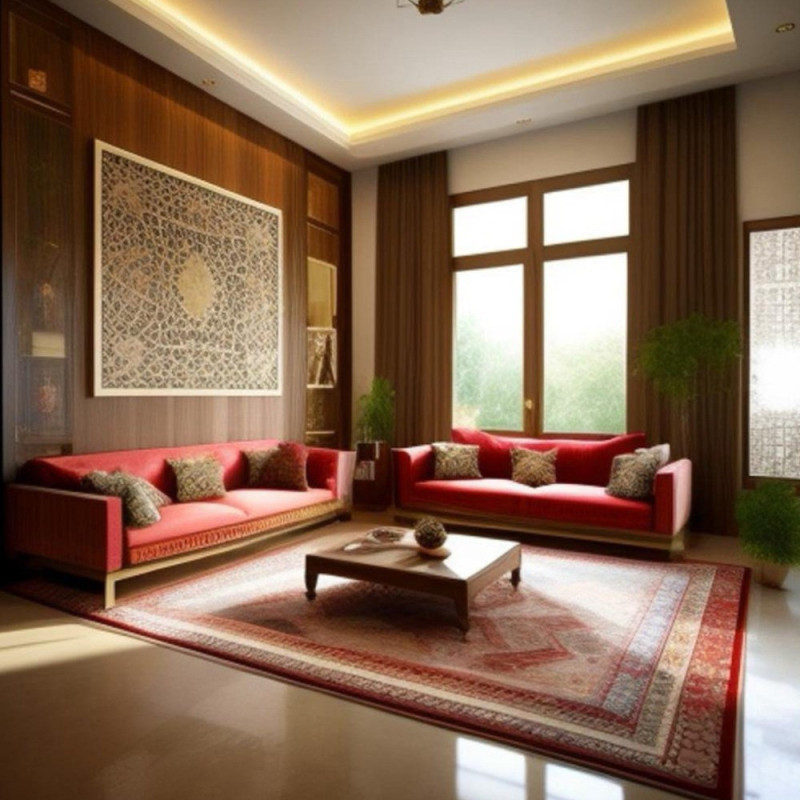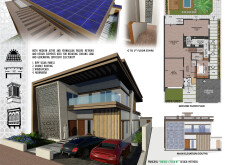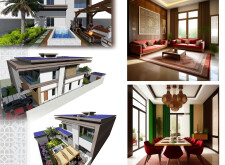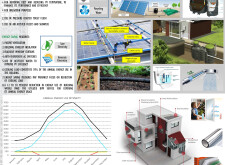5 key facts about this project
### Overview
Located in Dubai, UAE, this residential villa is designed to reflect contemporary architectural practices while honoring local cultural heritage. The intent is to create a living environment that merges energy efficiency with traditional aesthetics, resulting in a distinctive and functional residence. The design carefully considers the local climate and cultural context, ensuring relevance in a rapidly evolving urban landscape.
### Spatial Organization and Environmental Strategies
The villa encompasses a total plot area of 450 square meters, with a built-up area of 395 square meters, structured over two levels. The layout includes four bedrooms, a maid's room, a majlis for social gatherings, and a storage area, accommodating up to nine occupants. A focus on maximizing natural light and ventilation informs the internal arrangement, which features well-positioned balconies and patios that enhance the indoor-outdoor connection.
Key sustainable elements include the incorporation of Building-Integrated Photovoltaic (BIPV) solar panels, which not only generate electricity but also provide shading. Additionally, double roofing minimizes heat gain, promoting thermal comfort, while strategically placed windcatchers facilitate passive cooling. The use of traditional mashrabiya screens contributes to privacy and light management, enhancing both aesthetic and functional qualities.
### Material Selection and Sustainability
The selection of materials reflects a balance of modern durability and traditional form. The structure utilizes concrete for its strength, large glass panels for light optimization, and timber for warmth and charm. Insulation materials are employed to maximize energy efficiency and reduce cooling loads, while weather-resistant finishes ensure resilience against Dubai’s environmental conditions.
Sustainability is further prioritized through various strategies: the villa's annual energy use intensity is approximately 54,054 kWh/year, with cooling loads accounting for 37,764.54 kWh/year. BIPV systems are projected to generate around 48,000 kWh/year, significantly offsetting energy consumption. Water conservation measures, including wastewater treatment for irrigation and pressure-assisted fixtures, underline the commitment to sustainable living. Passive design techniques, such as optimal window placements and blackout curtains, enhance thermal performance by controlling heat gain.






















































